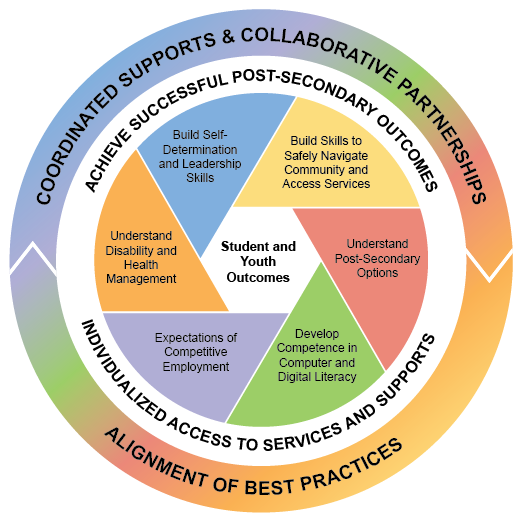You are here
How to Use the Sequencing of Services Framework
How to Use the Framework
1. Understand the Key Components to the Sequencing of Services Framework.
2. Learn about the 6 Core Student Outcomes.
3. Understand different outcomes across the ages by clicking on the ages within each Core Student Outcome (less than 14, 14, 15-16, 17-18, 19-21, 21-24).
4. Learn about services, resources and agencies that support students in achieving those outcomes
5. Find out how families can support in achieving these outcomes
6. Fill out the Sequencing of Services Framework for your local community with your resources and partners
State and Local Services
Within this Sequencing of Services Framework you will find state level expected services and agencies for each outcome. You can click on each link for the service or agency/entity to learn more.
Example:
|
Service |
Schools |
Parent Centers |
Family Members |
||||||
|---|---|---|---|---|---|---|---|---|---|
|
Self-Advocacy |
X |
X |
X |
X |
X |
X |
X |
*(CCBs are local)
For your own use:
Click on the Local Team template to fill out the unique services and agencies/partners involved in your community to help students achieve these outcomes.
Public State Level Dashboard - Smartsheet.com
Summary:
The framework and workbook were created by state level and local stakeholders to improve individual access to services and supports, build local collaboration and improve student outcomes. This workbook is a tool to help you navigate services for students with disabilities across an age continuum to achieve the 6 Core Student outcomes that include employment, health management, community access, postsecondary opportunities, digital literacy and self-determination/leadership skills. The workbook can help to raise our expectations about what is available to access and ultimately better prepare students with disabilities for adult life.




Connect With Us





